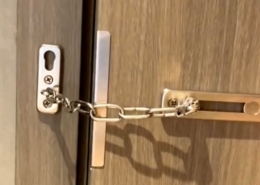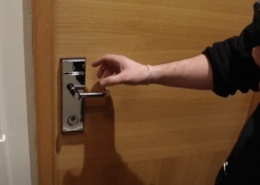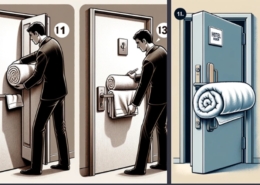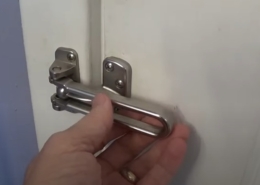How to Bypass a Key Card Lock In 5 Simple Methods?
When you lose your card or key fob, you can try to bypass a key card lock. And this article will let you know some ways how to bypass a key card lock.
If you’ve tried to bypass a key card lock In case of emergency but found that your attempts at entry were unsuccessful, don’t be discouraged. The good news is that you can use several methods to unlock a hotel key card lock easily and efficiently. We’ll discuss some of the most popular ways in this article.
Here’s a summarized table on how to bypass a key card lock:
| Method | Description |
|---|---|
| Using a Master Key Card | A master key card is designed to unlock almost every door within a hotel’s premises. |
| Using a Paper Clip | Paper clips can be used as makeshift lock-picking tools to bypass some basic locks. |
| Using a Credit Card | A credit card can sometimes bypass simple latch-style locks on interior doors. |
| Using Bobby Pins | Bobby pins can be repurposed as makeshift lock-picking tools. |
| Using an Arduino Microcontroller | An Arduino microcontroller can exploit the DC power socket vulnerability in older Onity locks. |
Please note that while these methods can bypass key card locks, they might not work on all locks, especially more advanced or high-security ones. It’s also essential to use these methods responsibly and ethically.
Method 1: Using a master key card
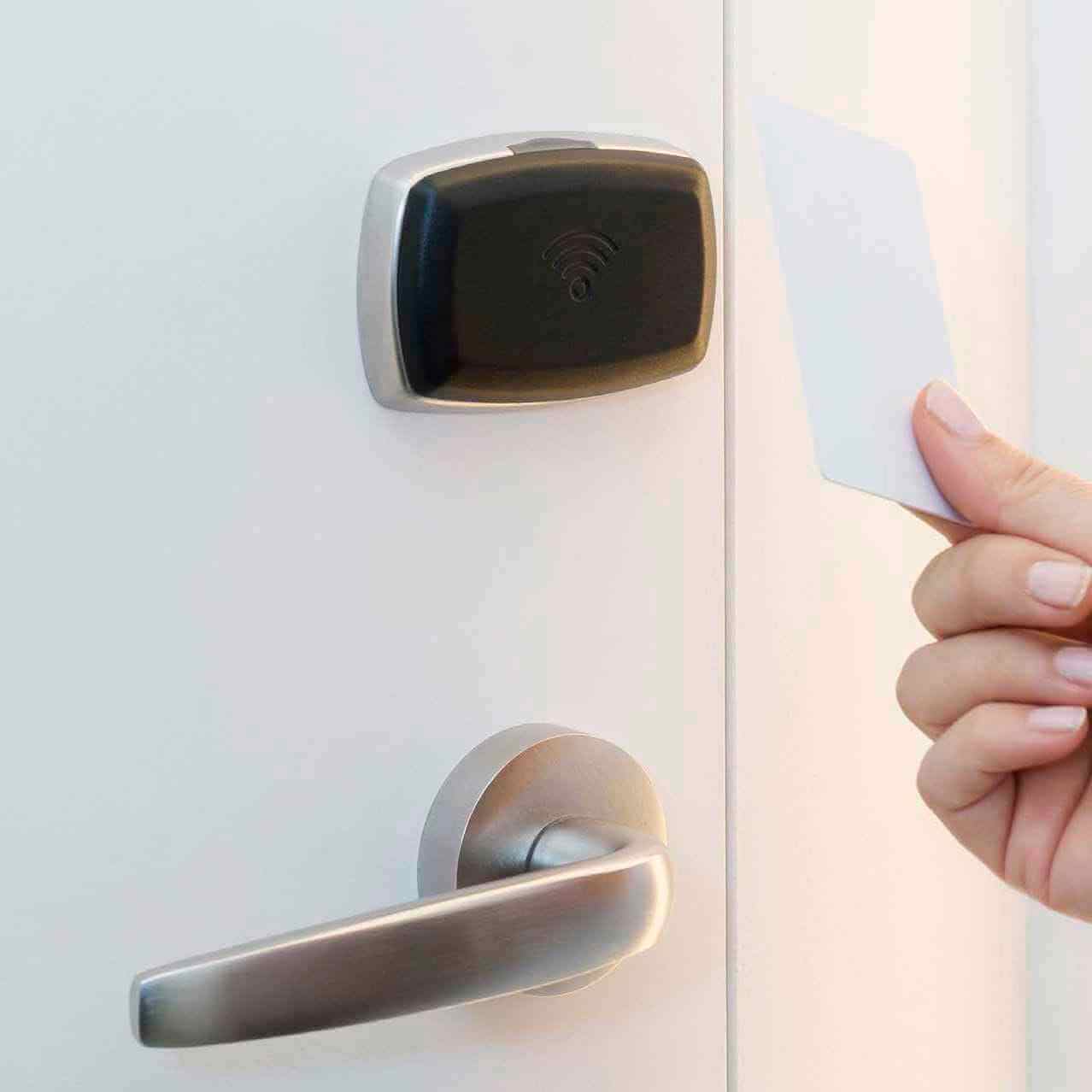
In the intricate world of hotel security, the master key card is a powerful tool. Unlike regular guest key cards, which are programmed to grant access to a specific room or suite, the master key card is designed to unlock almost every door within the hotel’s premises.
The process of using a master key card to bypass a key card lock is straightforward:
- Obtain a master key card from the person with access to the door you want to open. Also, you can program a master key card with hotel lock system management software and a key card encoder. To learn programming hotel key cards, please check this article: How to Program Hotel Key Cards?
- Approach the Door: Just like using a regular key card, approach the door you intend to unlock.
- Swipe or Tap: Depending on the technology (magnetic stripe or RFID), swipe the master key card through a card reader slot or tap it against a proximity sensor.
- Unlocking: The lock will read the data on the master key card. Recognizing it as a universal access code, the lock will disengage, allowing entry.
- Multiple Access Points: The beauty of the master key card lies in its versatility. The same card can unlock multiple doors, be it guest rooms, service areas, or restricted zones within the hotel.
The hotel master key card embodies convenience and efficiency for hotel staff, especially management and security roles. However, its power also makes it a potential security risk if it falls into the wrong hands. Hotels must ensure stringent protocols for issuing, using, and storing these cards, ensuring potential vulnerabilities don’t overshadow their benefits.
Method 2: Using A Paper Clip
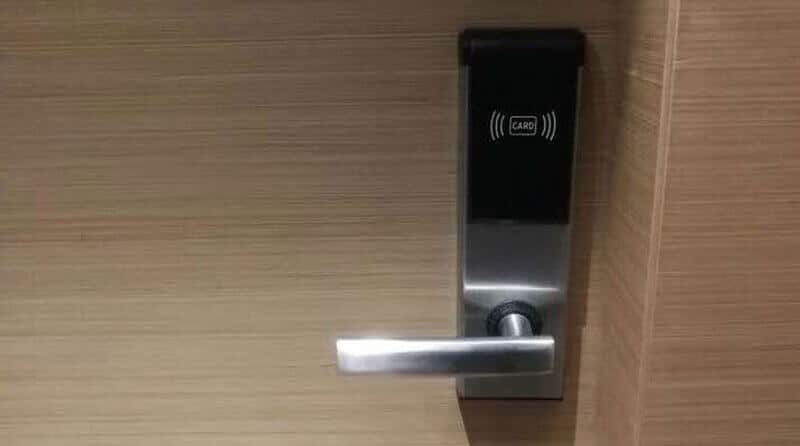
Due to their flexibility and availability, paper clips have been popularly used as makeshift lock-picking tools. While they might not be as effective as professional tools, with patience and practice, they can be used to bypass some basic locks.
Here’s a step-by-step guide on how to use a paper clip for lock picking:
- Prepare the Paper Clips: Straighten out one paper clip, leaving a small hook at one end. This will be your pick for manipulating the pins inside the lock. Unfold a second paper clip halfway to form an L-shape. This will act as your tension wrench to apply rotational pressure on the lock cylinder.
- Insert the Tension Wrench: Place the short end of the L-shaped paper clip (tension wrench) into the bottom part of the keyhole. This tool will apply a slight rotational pressure on the lock, simulating the action of turning a key.
- Insert the Pick: Insert the hooked end of the straightened paper clip (the pick) into the top part of the keyhole above the tension wrench.
- Apply Gentle Pressure with the Tension Wrench: Start manipulating the pins with the pick while maintaining gentle rotational pressure on the tension wrench. The goal is to push each pin up until it sets into place.
- Rake the Pins: Use the pick to rake the pins by moving them back and forth inside the lock. This action, combined with the pressure from the tension wrench, might set the pins in their correct positions.
- Turn the Cylinder: Once all the pins are set, you’ll feel the cylinder give slightly. Increase the rotational pressure on the tension wrench to turn the cylinder, just as you would with a key, and unlock the lock.
Bypassing a key card lock with a paper clip showcases the potential vulnerabilities of traditional locks. However, it’s important to note that this method might not work on all locks, especially more advanced or high-security ones.
Method 3: Using a credit card
Using a credit card or a similar plastic card to bypass a key card lock is a method often depicted in movies and TV shows. While it’s ineffective against all locks, it can sometimes bypass simple latch-style locks, especially on interior doors. Here’s a step-by-step guide:
- Select the Right Card: Choose a plastic card you’re willing to damage potentially, such as an expired credit card or an old membership card. The card should be flexible yet sturdy.
- Position Yourself: Stand facing the door, ensuring a clear view of the space between the door and the frame.
- Insert the Card: Slide the card between the door and the frame, targeting the area where the latch mechanism is located. The card should be inserted perpendicular to the door, with the edge of the card aiming for the latch.
- Apply Pressure: Once the card is positioned against the latch, push it further and bend it toward the doorknob. The aim is to slide the card’s edge behind the latch, pushing it out of the doorjamb.
- Maneuver the Card: While maintaining pressure on the card, wiggle and maneuver it. The goal is to push the latch back into the door, disengaging the lock.
- Open the Door: Once the latch is disengaged, turn the doorknob and push or pull the door open.
- Note on Limitations: This method primarily works on spring latches, common in interior and older exterior doors. It won’t be effective against deadbolts or more advanced locking mechanisms. Additionally, some modern doors have security plates or other features that prevent this method from working.
Method 4: Using Bobby pins
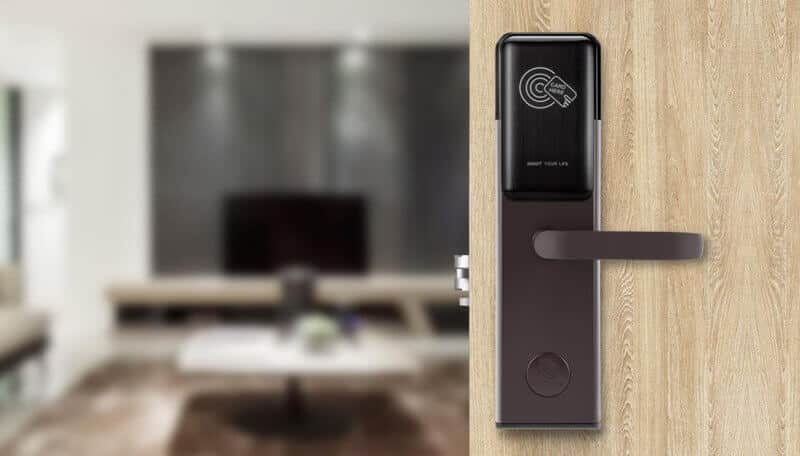
Bobby pins, commonly used to hold hair in place, can be repurposed as makeshift lock-picking tools. Their flexibility and thin structure make them suitable for manipulating the pins inside a lock. Here’s a step-by-step guide on how to use bobby pins for lock picking:
- Prepare the Bobby Pins: Straighten out one bobby pin, leaving a small hook at one end. This will be your pick for manipulating the pins inside the lock. Please unfold a second bobby pin halfway to form an L-shape. This will act as your tension wrench to apply rotational pressure on the lock cylinder.
- Insert the Tension Wrench: Place the short end of the L-shaped bobby pin (tension wrench) into the bottom part of the keyhole. This tool will apply a slight rotational pressure on the lock, simulating the action of turning a key.
- Insert the Pick: Insert the hooked end of the straightened bobby pin (the pick) into the top part of the keyhole above the tension wrench.
- Apply Gentle Pressure with the Tension Wrench: Start manipulating the pins with the pick while maintaining gentle rotational pressure on the tension wrench. The goal is to push each pin up until it sets into place.
- Rake the Pins: Use the pick to rake the pins by moving them back and forth inside the lock. This action, combined with the pressure from the tension wrench, might set the pins in their correct positions.
- Turn the Cylinder: Once all the pins are set, you’ll feel the cylinder give slightly. Increase the rotational pressure on the tension wrench to turn the cylinder, just as you would with a key, and unlock the lock.
It’s important to note that this method might not work on all locks, especially more advanced or high-security ones.
Want to avoid bypassing a key card lock? Try our TThotel door lock system to help you manage your hotel room door more safely, remotely, and conveniently with your phone.
Method 5: Using an Arduino Microcontroller.
The Arduino is a popular open-source electronics platform known for its ease of use and adaptability. With the right instructions, an Arduino microcontroller can exploit the DC power socket vulnerability in the older Onity locks.
Some older Onity locks were designed with a DC power socket, primarily intended for battery charging and reprogramming the lock when needed to change its code. However, this feature, which was a convenience, inadvertently became a security loophole.
Here’s a simplified explanation of how it works:
- Connection: The Arduino microcontroller is connected to the DC power socket of the vulnerable Onity lock using appropriate connectors.
- Sending Commands: Once connected, the Arduino is programmed to send specific commands to the lock. These commands mimic the signals the lock expects to receive from a legitimate key card.
- Tricking the Lock: Upon receiving these commands from the Arduino, the lock is tricked into thinking that a valid key card is being used. As a result, it disengages the locking mechanism, granting access.
- Speed and Stealth: Connecting the Arduino and sending the commands can be executed swiftly, often in seconds. This rapid bypass method leaves little room for detection, especially if the intruder is familiar with the lock’s design.
The Arduino-based exploit of the Onity key card locks underscores the importance of continuous security assessments and updates for electronic locking systems. While the vulnerability was specific to older models, it is a reminder that even seemingly minor features, like a DC power socket, can become potential security risks.
Why Bypass a Key Card Lock?
The very essence of a lock is to provide security, to act as a barrier between an unauthorized individual and a protected space. With their modern flair and convenience, key card locks are no exception. However, there are instances when bypassing these locks becomes a necessity, either for legitimate or illegitimate reasons.
Legitimate Reasons for Bypassing
- Lost Card: It’s a scenario many of us have faced. You’re rushing to a meeting or heading back to your hotel room, suddenly realizing your key card is missing. In such situations, bypassing the lock becomes essential to regain entry.
- Malfunctioning Lock: as advanced as it might be, technology is not immune to glitches. A key card lock might malfunction for various reasons – software glitches, wear and tear, or environmental factors like extreme temperatures. When regular access methods fail, bypassing becomes the only viable option to enter the premises.
- Non-working Master Key: In larger establishments like hotels or corporate buildings, master keys are used by administrators to access multiple rooms or sections. However, there might be instances when even these master keys fail to work, either due to a coding error or a system-wide glitch.
Illegitimate Reasons for Bypassing
- Access to Information: In the digital age, information is power. Criminals often target key card-protected areas to access confidential data, corporate secrets, personal information, or sensitive government data. Bypassing the lock becomes a means to an end in their quest for valuable information.
- Property Theft: Beyond information, tangible assets are also a prime target. Whether it’s expensive equipment in an office, valuables in a hotel room, or assets in a restricted storage area, bypassing key card locks can give thieves a golden opportunity to steal.
- Causing Harm: Unfortunately, there are instances where the intent behind bypassing a lock is more sinister. Individuals with malicious intent might seek to harm room occupants or disrupt an establishment’s operations. In such cases, the key card lock stands as the primary barrier between the perpetrator and their intended target.
Conclusion
Well, that’s all there is to it! Now you know how to bypass a key card lock. All you need is some electrical tape, some time, and patience. These simple steps allow you to bypass any key card lock in your home or office.


